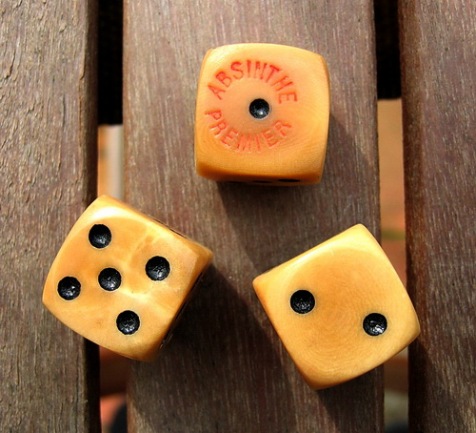Age may be just a number, but scoring absinthe goes far beyond the digits scrawled on a sheet of paper which is slightly wet at the corner because you’ve been sitting your glass down there instead of on the coaster you neglected to bring over to the table. An absinthe score can often reveal as much about the drinker as the drink itself, while simultaneously issuing a firm judgment from the bench without revealing any mitigating circumstances which may have applied. Actual written reviews allow for complete control over how to present impressions, thoughts, and feelings about the drink, as well as control over the tone of voice and inflections used to convey that information; reviewers can even include anecdotes and background information which has little or nothing to do with the absinthe itself, all to the point of establishing a certain mood or setting in which to present their more concrete determinations. In short, a review is a subjective take on what value that particular absinthe holds for the reviewer; in contrast, a score is an objective determination of what value that absinthe should hold for everyone else (insofar as any human individual can be objective).
I’m not an expert on the subject of absinthe, but I’ve had the good fortune of being able to drink quite a few different ones over the past three years, and I believe that knowledge base may be of some use to some people who are considering a purchase in the near future. While I’ve taken notes on almost everything I’ve ever sampled, and even published a number of reviews online, that would be a lot of unnecessarily detailed information to force someone to wade through before dropping a pair of Benjamins on a couple of bottles of good absinthe. Consider the numbers below to be the Cliff’s notes version, minus the notes.
I’ll continue to add new scores to this list as I sample more absinthes. Perhaps at some later date, I’ll also add in three or seven descriptors to provide a little extra insight and detail (and yes, it has to be three or seven; not only are they prime numbers, but they are magic ones as well, and I’ve got to justify that title up there somehow, gentle reader). For now, though, the numbers below represent the final score (which is given first), and then in parenthesis I have given the score for each of the two categories that I wrote about previously in this post – namely, Appearance and Aroma, as well as Flavor and Finish.
Stock market figures be damned, here are the numbers that matter:
Score
- 10 (5/5) Edouard Pernod [pre-ban circa 1905]
- 10 (5/5) Pernod Tarragona [non-ban circa 1956]
- 10 (5/5) Brevans H.R. Giger
- 10 (5/5) La Capricieuse
- 10 (5/5) Walton Waters
- 9 (4/5) Pernod Fils [preban circa 1910]
- 9 (4/5) Doubs Mystique
- 9 (5/4) Jade Edouard
- 9 (4/5) La Clandestine
- 9 (5/4) Meadow of Love
- 9 (4/5) Pacifique
- 9 (4/5) Ridge Blanche
- 9 (4/5) Ridge Verte
- 9 (4/5) Sapphire la bleue
- 8 (4/4) Belle Amie
- 8 (4/4) Berthe de Joux
- 8 (3/5) Blues Cat
- 8 (4/4) Duplais blanche
- 8 (4/4) Essai 5 Blanche “Brut d’Alambic”
- 8 (4/4) Leopold Bros.
- 7 (4/3) Duplais verte
- 7 (4/3) Vieux Pontarlier
- 7 (3/4) Eichelberger 68 Limitee
- 7 (4/3) Kübler [European version]
- 7 (3/4) LDF Absinthe Suisse La Verte (PAS AUTHORISEE par le VdT)
- 7 (3/4) Mansinthe
- 6 (3/3) La Valote
- 6 (3/3) Obsello
- 6 (3/3) Père François
- 6 (3/3) Vieux Carre
- 5 (3/2) Lucid
- 5 (3/2) Un Emile 45 [reformulated 2011 version]
- 4(3/1) Trillium
- 4 (3/1) Pernod aux extraits de plantes d’absinthe [modern Pernod]
- 3 (2/1) St. George
- 2 (2/0) La Charlotte

Leave a comment